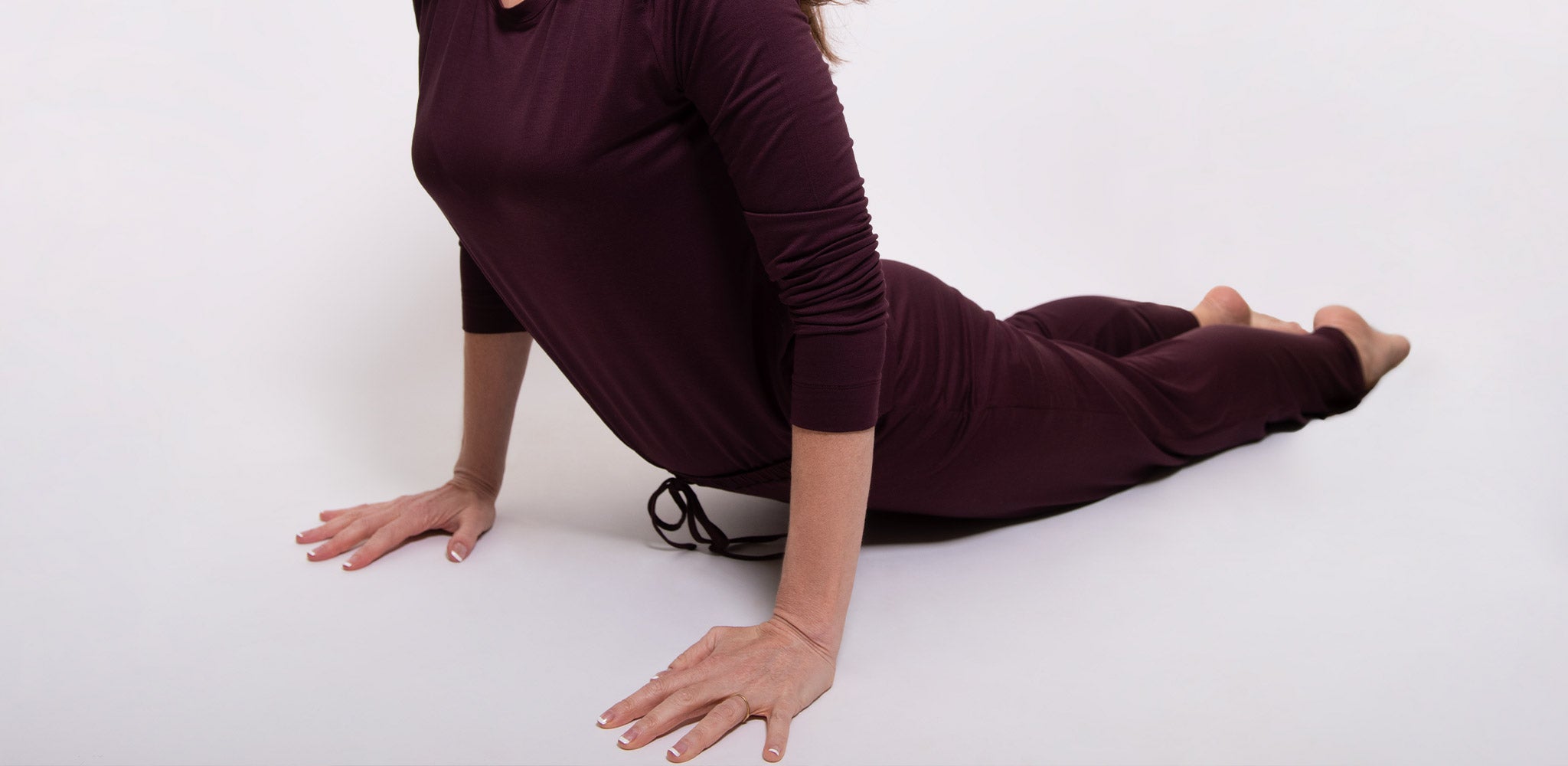Menopause for Modern Life

Thank you to Movement for Modern Life who has kindly written a blog for Fifty One Apparel on the benefits of yoga during the menopause.
How can yoga support you through menopause?
Many of the symptoms we face during menopause can be connected to our lifestyle choices and to chemical balances/imbalances in our own body. By paying more attention and taking care of our physical and mental health, we can support our endocrine system and make the journey through menopause more easeful.
From age 40 onwards, our bodies and our needs are changing. There is a growing amount of advice and research out there about ways you can support your body’s changes through nutritional choices and important vitamins and minerals.
But another important factor to address is stress and lifestyle management; choosing the right kind of exercise can help us stay positive and balanced (mentally and physically) in our menopausal years.
Why is moderate exercise important in menopause?
We know that Bone Mineral Density (BMD) declines as we age and go through menopause. Because of this, including a mixture of cardiovascular and weight bearing exercise can help you to maintain your muscle mass, bone density and heart health.
As with everything, this needs to be proportional to your body’s energy levels and capacity as pushing and powering through, with an already fatigued menopausal body, can cause more mental and physical stress.
A suggestion is to combine different forms of exercise and movement, so you have different options to turn to depending on your energy levels. Exercise options could include cardiovascular exercise, weights, somatic movement, swimming, or yoga.
6 ways yoga can improve your menopause symptoms:
“Yoga is a fantastic exercise for the entire body. It can improve some of the symptoms of the menopause, including sleep disturbance, fatigue, low mood, and anxiety. Some women find it helps to reduce hot flushes too.” Dr Louise Newson.
Yoga can improve some of the physical, emotional, and psychological symptoms that we face with menopause. But it is important to choose and practice a style that best supports your needs at any given time.
- Improves Muscle Tone and Bone Density
Oestrogen levels decline with the onset of menopause and continues as we get older, causing a rapid bone density loss. According to research, about 10% of a woman’s bone mass is lost in the first 5 years of menopause. By practicing hatha yoga with longer holds and standing balances, we can maintain flexibility, our overall strength and improve our balance. All this is vital for preventing falls and bone fractures as we age. A review found that yoga is as “effective or better than other forms of exercise at improving muscle strength and flexibility.”
- Reduces Hot Flushes
Yoga and breath work can be calming and cooling, lowering the body temperature and helping you surrender to the natural process of change associated with the perimenopause and menopause. Tension and stress exacerbate heat and can become triggers for hot flushes. By calming our mind with yoga and breath work, we can work to ease hot flushes. We recommend yoga techniques such as cooling breath or slow meditative practices like hatha yoga.
- Relieves Anxiety and Stress
Meditation and mindfulness practices in yoga can help to bring us into the present moment and therefore help relieve stress and anxiety. You can find the more meditative and mindful practices by doing a yin yoga or restorative yoga class. Doing these practices before bed can also improve your sleep quality.
- Improves Pelvic Floor Strength
Core strengthening exercises such as boat pose or yogi bicycles, often found in stronger vinyasa practices, can improve pelvic floor muscle strength.
- Eases Aches & Pains
Yoga can be a full body workout, strengthening your muscles, improving your flexibility and mobility. When you move your whole body mindfully, you lubricate your fascia and create more space in your joints. This can help ease aches and pains associated with menopause.
- Lifts Negative Feelings and Thoughts
Pranayama (breathing) techniques practiced in yoga can help to lift negative feelings and thoughts. By doing less and moving at the pace your nervous system can tolerate, soothing and calming practices allow pleasure and ease back into your system. Alternate nostril breathing is very soothing for the nervous system, as is a yoga nidra practice before bed.
How to know what to practice and when
You can learn to recognise your symptoms and connect to your physical and psychological needs accordingly. For example avoiding a hot yoga class when you are having a bout of hot flushes, or avoiding ashtanga if you are physically exhausted. It’s also about understanding your needs will change as you transition through the menopause. Through your yoga practice you can start to develop a deeper communication with yourself, and this is the most empowering practice of all.
On the Menopause for Modern Life course, you have the opportunity to try out several different styles of yoga and movement (including dynamic vinyasa yoga, nidra and restorative yoga, meditation, somatic movement, qigong and Menopause Yoga) and you can figure out what works best for you on different days.
FREE CLASS:
https://movementformodernlife.com/yoga-for-hot-flushes
A simple visualisation exercise to help to manage hot flushes often associated with the menopause. This short yoga class is one simple pose, breathing deeply whilst lying in a constructive rest position. You can do this any time when experiencing uncomfortable feelings of heat. If you practice this daily to reduce stress, you will also develop the simple skills for managing hot flushes, as you learn to allow the heat to flow calmly through you, rather than resisting it.
0 comments


